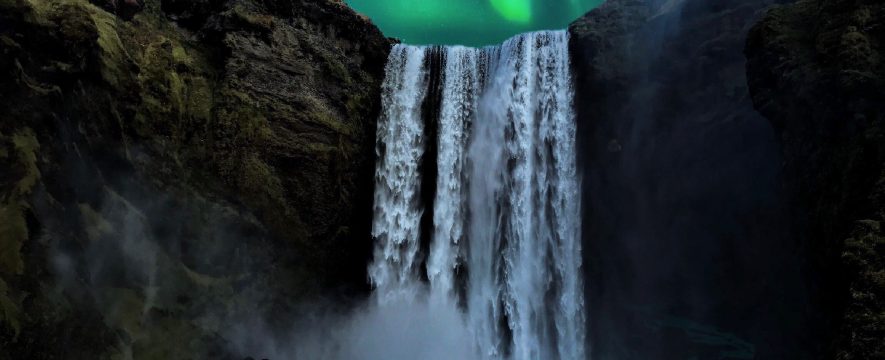Introduction
The Icelandic Tourist Board has conducted a survey among foreign travelers since July 2017 in cooperation with Statistics Iceland with the goal to collect statistical information in order to provide a clear picture of the behavior and attitudes of travelers in Iceland.
The results from the responses of those who visited the country during the period between July 2017 and June 2018 are presented in this report.
You are about to find out that a lot has changed on the Iceland tourism scene since 2010. Has the most of it been for the good?
In this blog post, we look at data from the Tourism in Iceland in Figures report and try to understand why tourism in Iceland is gaining popularity so rapidly. Also, we provide tips for using this information to boost your travel business in Iceland.
The findings
The number of international visitors and cruises quadrupled
Yes, you read that correctly. The number of foreign visitors to Iceland has nearly quadrupled since 2010, with a yearly growth rate of 24,3% since 2010.
- 488,600 visitors in 2010
- 2,224,600 visitors in 2017
Since 2010, cruise ship passengers to Iceland have increased significantly from 72,000 in 2010 to 132,000 in 2017.
Who is the typical traveler to Iceland in 2016-2017?
When creating targeted ads for your services as a part of a marketing campaign, it’s crucial to know who you’re talking to.
However, this information is not important just so you can choose the audience for your campaign. More than just hitting the right audience, it’s important to hit them with a meaningful message and the right content.

Knowing your audience gender, age and income is a good place to start. According to the report, Iceland is almost equally popular among women and men. The visitors are 52% men and 47.8% women. The average respondent is 37.3 years old, and the majority of visitors who participated are in the 25 to 34 age group.
Approximately half of the respondents had an income that was higher than average in comparison to income in their own countries, and may we remind you that most of Iceland’s tourists come from USA, UK, and Germany where the income median is $62 175, $34 772, and $33 652 respectively.
Did you know you can use this information to create targeted Google display ads campaigns? If you want to find out more about setting up your campaign, stay tuned to our blog as we are preparing a special blog post on this.
Where do Iceland’s tourists come from?
Today, most of Iceland’s tourists come from USA, UK, and Germany. However, it’s Canadians and Americans who have made the biggest difference in the number of visits to Iceland since 2015.
Where are the tourists staying?
There was 8.4 million registered overnight stays in Iceland in 2017, an increase of 19.2% annually since 2010.
In 2017, the total percentage of room occupancy nation-wide was 72,1% in year-round hotels, with guests from the USA, the UK, Iceland, and Germany accounting for 62% of the total.
By their popularity rate, apart from hotels and guesthouses preferred forms of accommodation include rented private accommodation, camping sites, and youth hostels. However, the demand for that type of accommodation has been steady throughout the last couple of years.
Travel agencies should use this data to target hotel and guesthouse offers at visitors coming from the four notable countries.
What are the tourists’ motivations for visiting Iceland?
The Tourism in Iceland in Figures report provides excellent insight into what motivated visitors to take the trip to Iceland. Most respondents said it was the Icelandic nature that urged them to take the trip.
Others go because of the adventure, to experience something new or because it’s a bucket-list destination. A very high percentage also states interest in the Nordic region and wanting to perform nature-related recreation. Finally, a big fragment of respondents picks Iceland because they believe it’s a safe destination.

All these common motivators can serve as the foundation for an amazing blog. Remember that content sells, and if safety is a concern (and a motivator) for a great number of visitors, an article comparing the safety of Iceland to a couple of other, more popular destination Iceland has to fight for attention over might be the reason the scale tilts on the side of Iceland.
Which media/platforms do tourists use to organize and book their trips?
Numerous forms of media were used to organize the trip to Iceland. Many used the websites of airline operators, booking sites such as Booking.com and Hotels.com, public tourism sites and general search engines on the Internet.
Upon arrival in Iceland, the situation changes slightly. Their go-to channels for finding information, booking services and organizing the trip, are public tourism websites, travel books, books about Iceland, information centers and GPS technology.
So update the old content, refresh your website with inviting imagery and make sure your links and contact form are functional and pay attention to these channels when advertising your inbound travel arrangements:
- Websites + organic search
- Booking, Expedia
- Airbnb
- Travel blogs – another reason to start one
- Facebook and Instagram
- Brochures
The conclusion
The feedback on tourism
In general, the Tourism in Iceland in Figures report shows that attitudes towards tourists and tourism services are extremely positive, which gives Icelandic tourist agents a confirmation that they are headed in the right direction and provides motivation for the future.
By far, most visitors were satisfied with their trip to Iceland during the period July 2017 – June 2018, with the responses being measured on a five-point scale.

And while the travelers from North America and Britain were the most satisfied with their visit, most travelers show interest in coming back to Iceland. Still, visitors from Eastern Europe and the Nordic countries appear to be the most interested.
Determining the duration of your marketing campaign
The report shows that it took an average tourist around six months from the moment they first considered coming to Iceland to the realization of the plan.
This is a useful piece of information for determining the ideal duration of the agency’s marketing campaign. The first thing you can do is to set up the duration of your display ads to appear through the stated period.
But that’s not all you can do! A travel software with an integrated follow-up module will help you keep the potential travelers informed and engaged automatically, depending on the various actions they take.
To hire more people or to acquire a travel software, that is the question
Increased number of booking means more work for travel agencies. There are two possible ways to handle the increased workload. The agency must either hire more people (which means bigger expenses) or switching your manual operations to a travel agency software.
With a travel software, not only do you save money but also get benefits that only a digital system can give you: speed, accuracy, the speed with changes (automation), centralization of all business processes in one place.
If you’re not sure whether switching to a travel software would be worth it, we encourage you to use our travel agency expense calculator to compare the expenses of doing business manually (using Excel sheets) and running your business with a travel software.

Use our savings calculator to calculate how much your travel agency can save with business automation module.
Interested to find out more? Contact us and set an appointment with our software expert.



